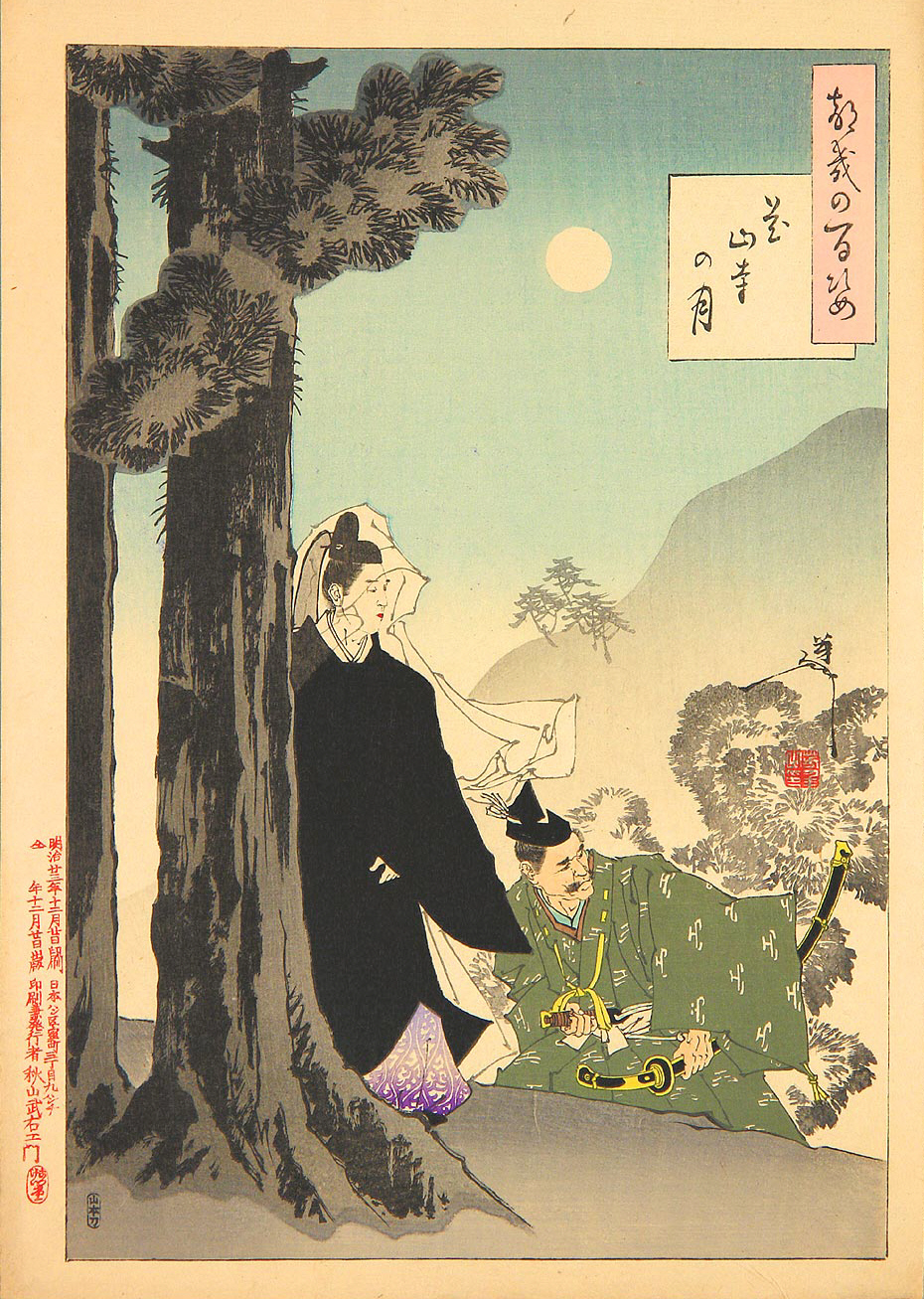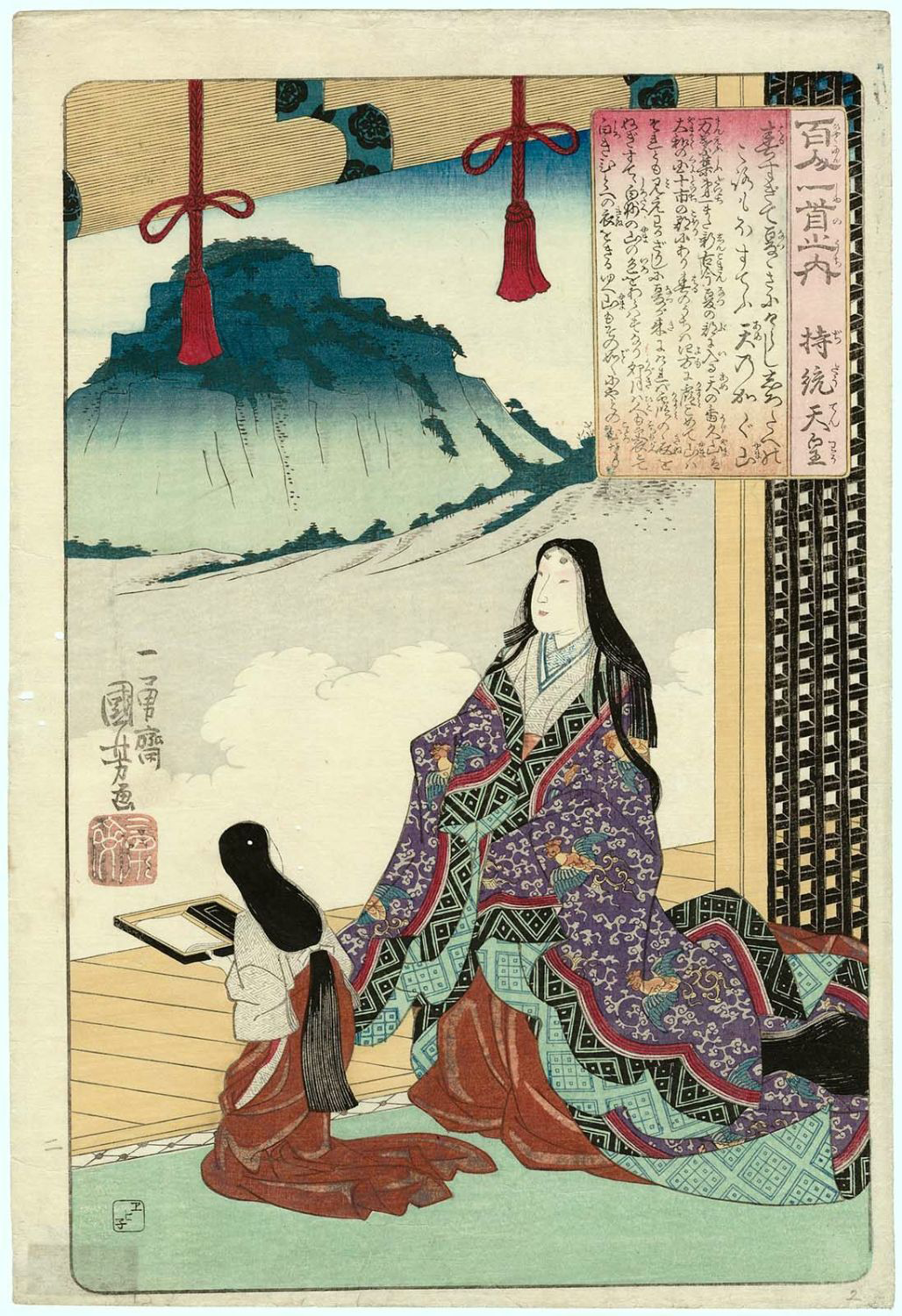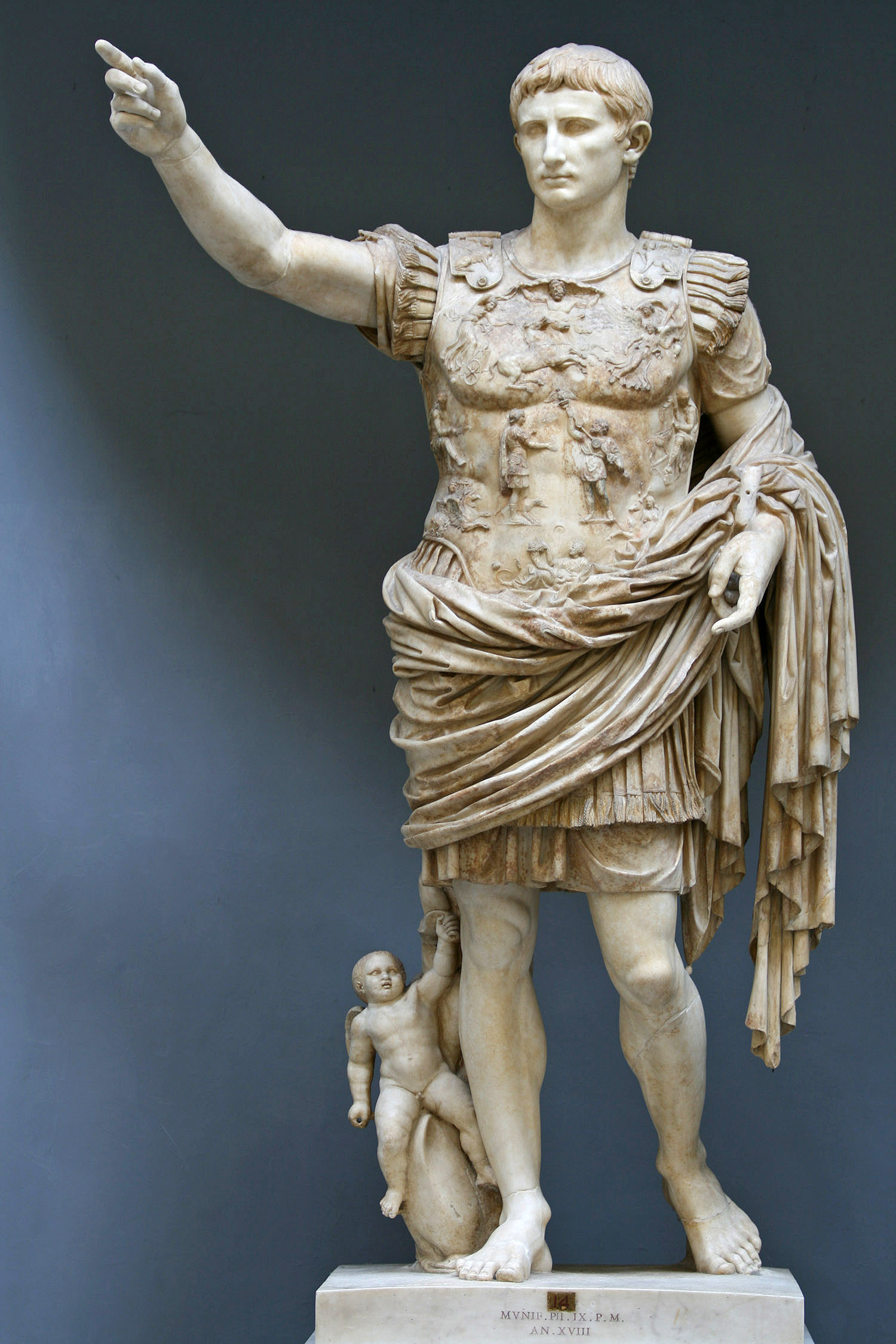|
Emperor Sanjō
was the 67th emperor An emperor (from la, imperator, via fro, empereor) is a monarch, and usually the sovereign ruler of an empire or another type of imperial realm. Empress, the female equivalent, may indicate an emperor's wife ( empress consort), mother ( e ... of Japan,Imperial Household Agency (''Kunaichō'') 三条天皇 (67)/ref> according to the traditional List of Emperors of Japan, order of succession. Sanjō's reign spanned the years from 1011 through 1016. Biography Before his ascension to the Chrysanthemum Throne, his personal name (''imina'') was Iyasada''-shinnō''.Brown, p. 307; Varley, p. 195. He was also known as Sukesada''-shinnō'',Titsingh, p. 154. and as Okisada''-shinnō'' (居貞親王). Iyasada was the second son of Emperor Reizei. He was the half-brother of Emperor Kazan, who was Reizei's first-born son. Ieyasada's mother was Fujiwara no Chōshi (藤原超子) (?-982), who was the daughter of the ''sessho, sesshō'', Fujiwara no Kaneie. Chō ... [...More Info...] [...Related Items...] OR: [Wikipedia] [Google] [Baidu] |
Emperor Of Japan
The Emperor of Japan is the monarch and the head of the Imperial Family of Japan. Under the Constitution of Japan, he is defined as the symbol of the Japanese state and the unity of the Japanese people, and his position is derived from "the will of the people with whom resides sovereign power". Imperial Household Law governs the line of imperial succession. The emperor is immune from prosecution by the Supreme Court of Japan. He is also the head of the Shinto religion. In Japanese, the emperor is called , literally "Emperor of heaven or " Heavenly Sovereign". The Japanese Shinto religion holds him to be the direct descendant of the sun goddess Amaterasu. The emperor is also the head of all national Japanese orders, decorations, medals, and awards. In English, the use of the term for the emperor was once common but is now considered obsolete. The Imperial House of Japan, known by their name the Yamato Dynasty, is amongst the oldest in the world, with its historical ori ... [...More Info...] [...Related Items...] OR: [Wikipedia] [Google] [Baidu] |
Emperor Kazan
was the 65th emperor of Japan,Imperial Household Agency (''Kunaichō'') 花山天皇 (65)/ref> according to the traditional order of succession. Kazan's reign spanned the years from 984 through 986. Biography Before his ascension to the Chrysanthemum Throne, his personal name ('' imina'') was Morosada''-shinnō'' (師貞親王). Morasada was the eldest son of Emperor Reizei. The prince's mother was Fujiwara no Kaneko/''Kaishi'' (藤原懐子), who was a daughter of ''sesshō'' Fujiwara no Koretada. Morasada was also the brother of Emperor Sanjō.Titsingh, p. 148. Events of Kazan's life Prince Morasada was seventeen years of age at the time of the succession. * October 6, 984 ('' Eikan 1, 27th day of the 8th month''): In the 15th year of Emperor En'yu's reign (円融天皇十五年), he abdicated; and the succession (''senso'') was received by a nephew. Shortly thereafter, Emperor Kazan is said to have acceded to the throne (''sokui''). He commissioned the Shūi Wakash� ... [...More Info...] [...Related Items...] OR: [Wikipedia] [Google] [Baidu] |
Emperor Yōzei
was the 57th emperor of Japan,Imperial Household Agency (''Kunaichō'') 陽成天皇 (57)/ref> according to the traditional order of succession. Yōzei's reign spanned the years from 876 through 884. Traditional narrative Before his ascension to the Chrysanthemum Throne, his personal name (his ''imina'') was Sadaakira ''Shinnō'' (貞明親王). Yōzei was the oldest son of Emperor Seiwa. His mother was the Empress Fujiwara no Takaiko, who was also known after Seiwa's abdication as the Nijō empress. Yōzei's mother was the sister of Fujiwara no Mototsune, who would figure prominently in the young emperor's life.Titsingh, p. 121. In ancient Japan, there were four noble clans, the ''Gempeitōkitsu'' (源平藤橘). One of these clans, the Minamoto clan (源氏) are also known as Genji, and of these, the ''Yōzei Genji'' (陽成源氏) are descended from the 57th emperor Yōzei. Yōzei had nine Imperial children, born after he had abdicated.Brown, p. 288. He is said to ha ... [...More Info...] [...Related Items...] OR: [Wikipedia] [Google] [Baidu] |
Empress Jitō
was the 41st monarch of Japan, Imperial Household Agency (''Kunaichō'') 持統天皇 (41)/ref> according to the traditional order of succession. Jitō's reign spanned the years from 686 through 697.Titsingh, Isaac. (1834). In the history of Japan, Jitō was the third of eight women to take on the role of empress regnant. The two female monarchs before Jitō were Suiko and Kōgyoku/ Saimei. The five women sovereigns reigning after Jitō were Genmei, Genshō, Kōken/ Shōtoku, Meishō, and Go-Sakuramachi. Traditional narrative Empress Jitō was the daughter of Emperor Tenji. Her mother was Ochi-no-Iratsume, the daughter of Minister Ō-omi Soga no Yamada-no Ishikawa Maro. She was the wife of Tenji's full brother Emperor Tenmu, whom she succeeded on the throne.Varley, H. Paul. ''Jinnō Shōtōki,'' p. 137. Empress Jitō's given name was , or alternately Uno.Brown, D. (1979). ''Gukanshō'', p. 270. Events of Jitō's reign Jitō took responsibility for court administ ... [...More Info...] [...Related Items...] OR: [Wikipedia] [Google] [Baidu] |
Emperor Tenji
, also known as Emperor Tenchi, was the 38th emperor of Japan, Imperial Household Agency (''Kunaichō'')天智天皇 (38)/ref> according to the traditional order of succession.Ponsonby-Fane, Richard. (1959). ''The Imperial House of Japan'', p. 52. Tenji's reign spanned the years from 661 through 672.Titsingh, Isaac. (1834). Traditional narrative He was the son of Emperor Jomei, but was preceded as ruler by his mother Empress Saimei. Prior to his accession, he was known as . Events of Tenji's life As prince, Naka no Ōe played a crucial role in ending the near-total control the Soga clan had over the imperial family. In 644, seeing the Soga continue to gain power, he conspired with Nakatomi no Kamatari and Soga no Kurayamada no Ishikawa no Maro to assassinate Soga no Iruka in what has come to be known as the Isshi Incident. Although the assassination did not go exactly as planned, Iruka was killed, and his father and predecessor, Soga no Emishi, committed suicide soon ... [...More Info...] [...Related Items...] OR: [Wikipedia] [Google] [Baidu] |
Kankō
was a after '' Chōhō'' and before '' Chōwa.'' This period spanned the years from July 1004 through December 1012. The reigning emperors were and . Change of Era * 1004 : The era name was changed to mark an event or series of events. The previous era ended and a new one commenced in ''Kankō'' 6, on the 20th day of the 7th month of 1004. Events of the ''Kankō'' Era * March 17, 1008 (''Kankō 5, 8th day of the 2nd month''): The former-Emperor Kazan died at the age of 41. * July 16, 1011 (''Kankō 8, 13th day of the 6th month''): In the 5th year of Emperor Ichijō's reign (一条天皇5年), he abdicated; and the succession (‘‘senso’’) was received by his cousin. Shortly thereafter, Emperor Sanjō is said to have acceded to the throne (‘‘sokui’’). * July 15, 1011 (''Kankō 8, 22nd day of the 6th month ''): ''Daijō-tennō'' Ichijō died at the age of 32. * November 21, 1011 (''Kankō 8, 24th day of the 10th month''): ''Daijō-tennō'' Reizei, who was ... [...More Info...] [...Related Items...] OR: [Wikipedia] [Google] [Baidu] |
Emperor Ichijo
An emperor (from la, imperator, via fro, empereor) is a monarch, and usually the sovereign ruler of an empire or another type of imperial realm. Empress, the female equivalent, may indicate an emperor's wife ( empress consort), mother (empress dowager), or a woman who rules in her own right and name (empress regnant). Emperors are generally recognized to be of the highest monarchic honor and rank, surpassing kings. In Europe, the title of Emperor has been used since the Middle Ages, considered in those times equal or almost equal in dignity to that of Pope due to the latter's position as visible head of the Church and spiritual leader of the Catholic part of Western Europe. The Emperor of Japan is the only currently reigning monarch whose title is translated into English as "Emperor". Both emperors and kings are monarchs or sovereigns, but both emperor and empress are considered the higher monarchical titles. In as much as there is a strict definition of emperor, it is tha ... [...More Info...] [...Related Items...] OR: [Wikipedia] [Google] [Baidu] |
Nickname
A nickname is a substitute for the proper name of a familiar person, place or thing. Commonly used to express affection, a form of endearment, and sometimes amusement, it can also be used to express defamation of character. As a concept, it is distinct from both pseudonym and stage name, and also from a title (for example, City of Fountains), although there may be overlap in these concepts. Etymology The compound word ''ekename'', literally meaning "additional name", was attested as early as 1303. This word was derived from the Old English phrase ''eac'' "also", related to ''eacian'' "to increase". By the 15th century, the rebracketing, misdivision of the syllables of the phrase "an ekename" led to its rephrasing as "a nekename". Though the spelling has changed, the pronunciation and meaning of the word have remained relatively stable ever since. Conventions in various languages English nicknames are generally represented in quotes between the bearer's first and last name ... [...More Info...] [...Related Items...] OR: [Wikipedia] [Google] [Baidu] |
Crown Prince
A crown prince or hereditary prince is the heir apparent to the throne in a royal or imperial monarchy. The female form of the title is crown princess, which may refer either to an heiress apparent or, especially in earlier times, to the wife of the person styled crown prince. ''Crown prince'' as a descriptive term has been used throughout history for the prince who is first-in-line to a throne and is expected to succeed (i.e. the heir apparent), barring any unforeseen future event preventing this. In certain monarchies, a more specific substantive title may be accorded and become associated with the position of ''heir apparent'' (e.g. Prince of Wales in the United Kingdom or Prince of Asturias in the Spain, Kingdom of Spain). In these monarchies, the term crown prince may be used less often than the substantive title (or never). Until the late twentieth century, no modern monarchy adopted a system whereby females would be guaranteed to succeed to the throne (i.e. absolute pr ... [...More Info...] [...Related Items...] OR: [Wikipedia] [Google] [Baidu] |
Heir
Inheritance is the practice of receiving private property, titles, debts, entitlements, privileges, rights, and obligations upon the death of an individual. The rules of inheritance differ among societies and have changed over time. Officially bequeathing private property and/or debts can be performed by a testator via will, as attested by a notary or by other lawful means. Terminology In law, an ''heir'' is a person who is entitled to receive a share of the deceased's (the person who died) property, subject to the rules of inheritance in the jurisdiction of which the deceased was a citizen or where the deceased (decedent) died or owned property at the time of death. The inheritance may be either under the terms of a will or by intestate laws if the deceased had no will. However, the will must comply with the laws of the jurisdiction at the time it was created or it will be declared invalid (for example, some states do not recognise handwritten wills as valid, or onl ... [...More Info...] [...Related Items...] OR: [Wikipedia] [Google] [Baidu] |
Kanna (era)
was a after '' Eikan'' and before ''Eien.'' This period spanned the years from April 985 through April 987. The reigning emperors were and . Change of era * January 24, 985 : The new era name was created to mark an event or a number of events. The previous era ended and a new one commenced in ''Eikan'' 3, on the 27th day of the 4th month of 985.Brown, p. 302. Events of the ''Kanna'' era * 986 (''Kanna 2, 6th month''): Kazan abdicated, and took up residence at Kazan-ji where he became a Buddhist monk; and his new priestly name was Nyūkaku. * August 23, 986 (''Kanna 2, 16th day of the 7th month''): Iyasada-''shinnō'' was appointed as heir and crown prince at age 11. This followed the convention that two imperial lineages took the throne in turn, although Emperor Ichijō was in fact Iyasada's junior. He thus gained the nickname ''Sakasa-no moke-no kimi'' (the imperial heir in reverse). When Emperor Kanzan abandoned the world for holy orders, this grandson of Kaneie ascended to ... [...More Info...] [...Related Items...] OR: [Wikipedia] [Google] [Baidu] |
Sanjō Genji
In Japanese, may refer to: People *Emperor Sanjō (三条天皇; Sanjō-tennō), the 67th emperor of Japan * , a Japanese kuge family Fictional characters *Kairi Sanjō and Yukari Sanjō, fictional characters from the manga series ''Shugo Chara!'' *Reika Sanjō, fictional characters from the anime series ''Invincible Steel Man Daitarn 3'' *Yukito Sanjō, fictional character from the ''Bakuryu Sentai Abaranger'' Places * Sanjō, Niigata (三条市; Sanjō-shi), a city in Niigata Prefecture, Japan * , one of numbered east-west streets in the ancient capital of Heian-kyō, present-day Kyoto * , one of numbered east-west streets in the ancient capital of Heijō-kyō, present-day Nara * Sanjō Station (other), train stations "山上" and "三条" See also *Sanyo , stylized as SANYO, is a Japanese electronics company and formerly a member of the ''Fortune'' Global 500 whose headquarters was located in Moriguchi, Osaka prefecture, Japan. Sanyo had over 230 subsidiaries ... [...More Info...] [...Related Items...] OR: [Wikipedia] [Google] [Baidu] |


-by-Utagawa-Kuniyoshi.png)



